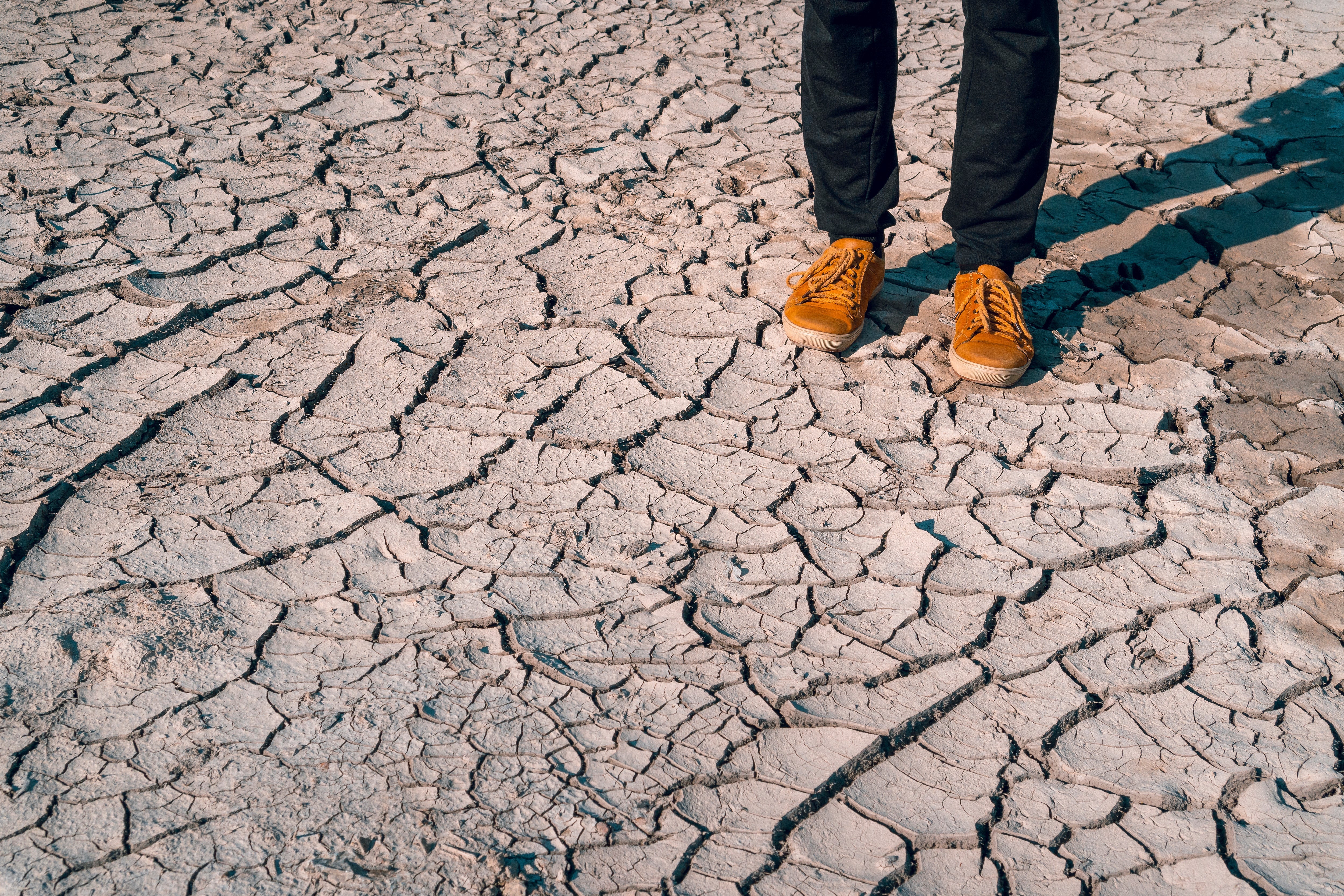Whether you notice a few fine lines taking up residence on your face or discoloration in places it's never been before, aging skin changes can be stressful and confusing, especially as you try and navigate the complex world of face care. While it’s important to celebrate life’s greatest adventure – AKA getting older – you can combat some of the visible aging skin changes with simple lifestyle and diet adjustments.
To help you better understand aging skin and why it happens, we’ve created a guide that’ll make navigating life and face care with mature skin a walk in the park:
What All Can Cause Aging Skin Changes?

The main cause of aging skin has to do with your cells. As you get older, your cells don’t regenerate as fast, resulting in dry, less elastic skin. Plus, by the age of 25, your skin’s production of collagen slows down, causing your skin to lose firmness.
Some other factors that can influence aging skin changes are:
- Diet: A poor diet can have a host of negative impacts on your skin. For example, unhealthy junk food can lead to breakouts and a dull appearance. Eating fruits and veggies that are packed with antioxidants can help you achieve a bright, lifted look.
- Hydration: Did you know that the amount of water you drink can influence your skin? Water helps flush your skin of toxins while keeping it hydrated. Without enough water, your skin may appear dry or tired.
- Stress: When you’re stressed, your body releases a chemical known as cortisol, which may lead to acne and inflammation. Stress can also cause your skin to appear dry, irritated, and lackluster.
- The Sun: The sun plays a huge factor in aging skin. UV radiation can harm your DNA, which may lead to wrinkles and age spots. You can combat the sun’s damaging rays by using sunscreen and wearing protective clothing.
What Are the Visible Aging Skin Changes?
The health and appearance of your skin depend on things like your lifestyle, genetics, personal habits, diet, and even your skincare routine. “As we age, our skin visibly changes in several ways,” says dermatologist Alok Vij, MD., “and a lot of it has to do things beyond your control.”
According to Dr. Vij, some visible aging skin changes you may notice are:
- Fine Lines and Wrinkles
- Dry, Itchy Skin
- Slack or Loose Skin (Due to the Lack of Collagen and Elastin in Your Skin)
- Transparent Skin (The Layers of Your Skin Thin as You Age)
- Fragile Skin (Some Layers of Your Skin Flatten, Causing Fragility)
- Easily Bruised Skin (Caused by Thinner Blood Vessel Walls)
- Prone to Skin Lesions (Like Non-Cancerous Tumors)

Photos of Aging Skin Changes

Pictured: Fine lines and Wrinkles | Source: Aida Aesthetics

Pictured: Dry, Itchy Skin | Source: iStock

Pictured: Slack or Loose Skin | Source: Medical News Today

Pictured: Transparent, Thin Skin | Source: Very Well Health

Pictured: Fragile, Bruised Skin | Source: iStock

Pictured: Skin Lesions | Source: Consultant 360
The Five Types of Aging Skin
Like most things in your body – skin aging is a complex process that has a lot of factors involved. To make it easier to understand, scientists have categorized aging skin into five types, which are intrinsic, extrinsic, lifestyle, hormonal, and catabolic.
Here’s a look at the five types of aging skin:
Intrinsic Aging

Intrinsic aging isn’t something that happens overnight – it’s actually a really slow process. Intrinsically aged skin can show signs of degeneration, resulting in visible, less elastic skin that’s lacking collagen and fibroblasts (a type of cell in your connective tissue). It’s characterized by smooth, pale, and dry skin with fine wrinkles that may be more apparent as you age.
Extrinsic/Lifestyle Aging

Extrinsic and lifestyle aging go hand-in-hand; they usually happen when you’re exposed to the sun’s damaging rays, which leads to a thing known as photoaging (when the sun prematurely ages your skin), and cigarette smoke. These two types of skin aging can be characterized by deep wrinkles, hyperpigmentation, and reduced skin elasticity.
Interesting Fact: Did you know that sun exposure is responsible for 80% of the effects of aging skin?
Hormonal/Catabolic Aging

Hormonal and catabolic aging mostly impacts women. These two types of skin aging begin with the decline of hormones during menopause, which can cause your skin to slowly lose collagen, thickness, hydration, and barrier function. Hormonal and catabolic aging can be characterized by sagging skin, as opposed to coarse wrinkles.
How Your Skin Changes As You Age
Ever wondered when your skin starts aging? Oddly enough, you may begin to notice aging skin changes as early as your 20s. The GIST, a YouTube channel, along with five board-certified dermatologists recently aired a video titled “Aging By the Decade.” It explores the face care concerns you’ll likely meet as you move through different phases of your life.
Here’s what the video covered:
Your 20s
"The biggest skincare concern I hear in patients in their 20s is slight dullness and generally looking more tired. This tends to occur in the mid to late 20s," says Caroline Robinson, MD, FAAD, a board-certified dermatologist. “These issues can be caused by sun damage that has started to accumulate over time, lack of sleep, stress, or even genetics.”
The dermatologists working with The Gist agreed that people in their 20s should begin establishing a good face care routine. Even though your skin will likely not have any visible aging skin changes, it’s still important to lay a foundation for the future. They also recommend using SPF 30, even when you plan on staying indoors, and a good-quality serum and cleanser.
MOX Recommendations:
Your 30s
Your 30s are when you’ll probably notice some aging skin changes, as well as the effects of sun damage that likely happened in your teens or your 20s. Dr. Robinson explains that patients in their 30s start seeing fine lines, loss of volume in their cheeks, and heavier pigmentation from sun damage. Plus, your skin's repair system slows down, which means dull, thin skin.
Dr. Robinson suggests adding toner and a skin-strengthening eye cream to your skincare routine. Using face care products that have a lot of antioxidants in them is another crucial step for repairing sun damage and brightening dull, thin skin. Try looking for plant-based or fruit/vegetable-based products with high amounts of antioxidants.
MOX Recommendations:
Your 40s
Your 40s are when your skin starts to lose volume and elasticity, which is responsible for the appearance of sagging skin and more obvious wrinkles. Interestingly enough, The Gist episode mentions that knowing about face care can make a world of difference when combatting aging skin.
Dr. Robinson says that because you're going through so many aging skin changes in your 40s that it’s important to use a lotion-like cleanser to hydrate and accelerate your cell turnover. She also mentions that incorporating a face care product that’s formulated with hyaluronic acid and fatty lipids can help protect and repair your skin barrier.
MOX Recommendations:
Your 50s+
"At this age, your skin will become thinner and less elastic. Bone resorption also occurs and this presents itself as a loss of volume. Dryness is another major concern, and you may see acne you haven't seen since your teenage years start to resurface. Excess pigment and signs of sun damage also become more prominent,” states Dr. Robinson.
Luckily, there are some great face care products out there that can help you tackle anything the next decades of your life throw at you. Dr. Robinson says using a mild, milky cleanser is key as they remove dirt and debris without stripping away important oils naturally produced by your skin. Most importantly, she concludes that aging is a great thing, so don’t be scared to celebrate!
MOX Recommendations:
Ways to Keep Your Skin Healthy and Strong
While a ton of factors play a part in aging skin, there are some things you can do to slow down the process:
- Protect Your Skin From the Sun 24/7
- Limit Smoking and Drinking Alcohol
- Get Your Exercise In
- Wash Your Face (Especially After a Sweaty Workout)
- Eat a Healthy, Balanced Diet
- Use Face Care With Good-For-You Ingredients Like Vitamin C
Combat Aging Skin Changes With MOX

At MOX, we know that taking care of your skin with good-quality face care is crucial to a smooth, young-looking appearance. Our products are formulated by Pharmacist and Nutritionist Ben Fuchs, who uses his expertise to infuse each MOX product with vitamins, minerals, and other good-for-you ingredients like Squalane to feed and exercise your skin from within.
The MOX Daily Face Care Kit, which is brimming with five-star reviews, features the Multi Nutrient Serum and Peppermint Cleanser. Our Multi Nutrient Serum is clinically proven to build collagen, improve strength, and increase moisture, while the Peppermint Cleanser removes surface dirt, hydrates your skin, and doubles as an awesome shaving cream.
Grab the MOX Daily Face Care Kit here to combat aging skin changes.





Leave a comment
This site is protected by hCaptcha and the hCaptcha Privacy Policy and Terms of Service apply.